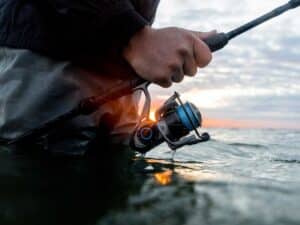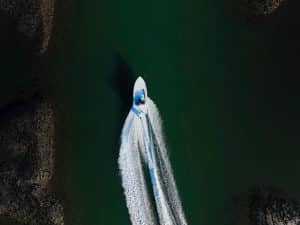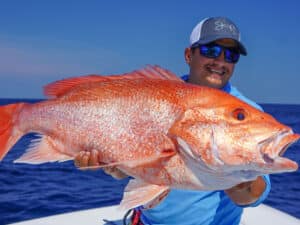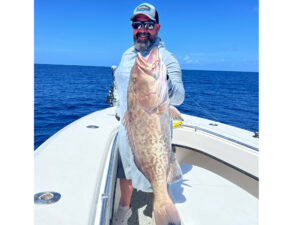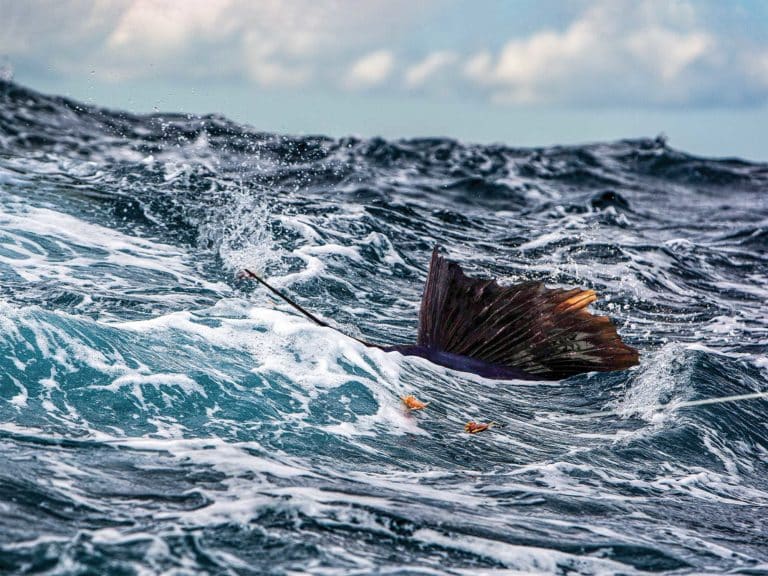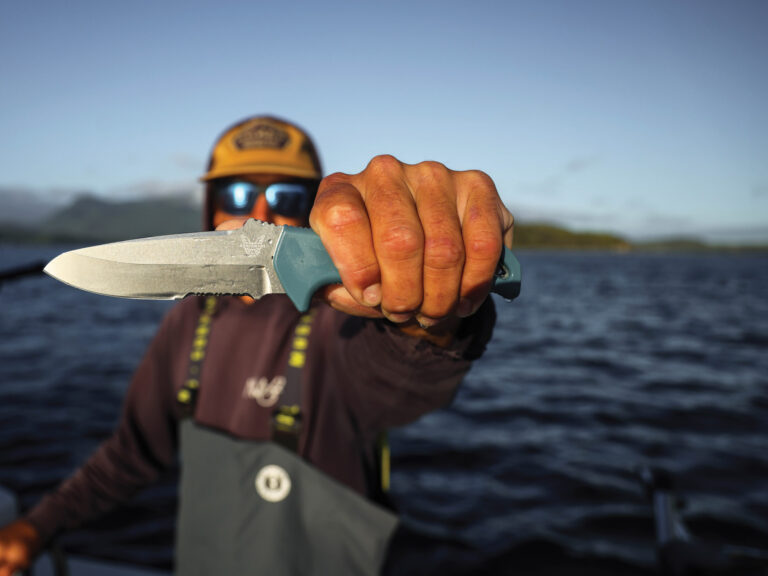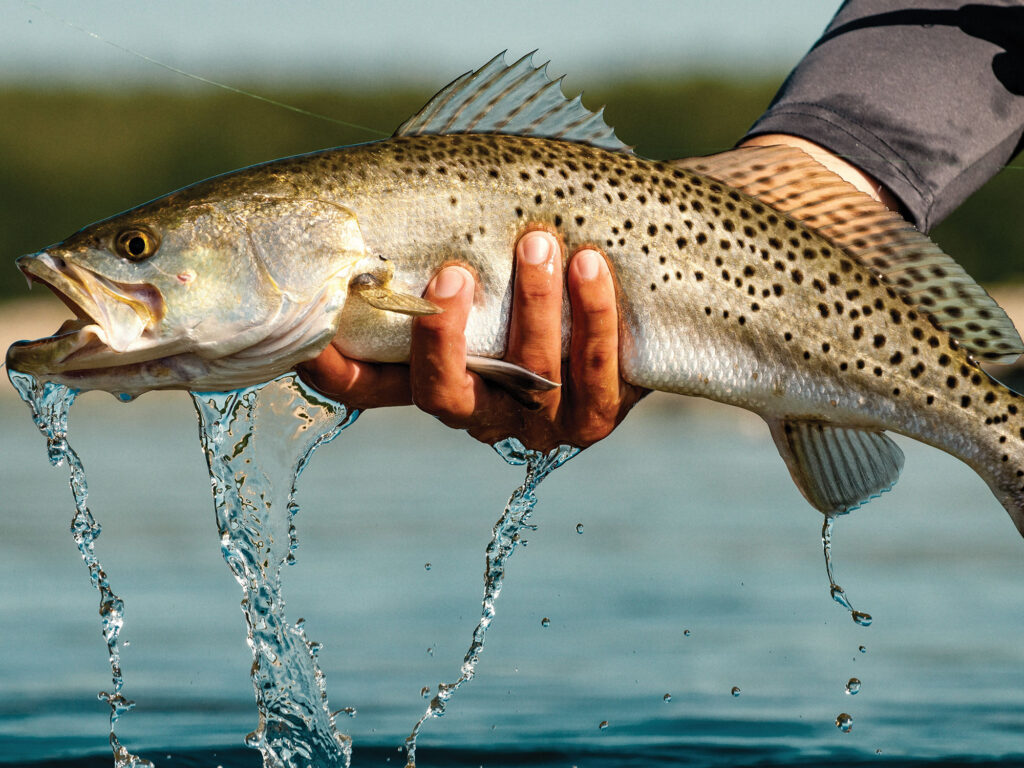
The middle of December, in the middle of the night, on a tidal creek in Chesapeake, Virginia, I stand on the bow of a skiff and cast a twitch bait into the darkness. It’s cold, but I try not to shiver because I’m afraid it will affect the lure’s action. I steady my hands and give the rod tip a twitch, twitch, pause. I hold still and count to 10 while my lure slowly sinks. Twitch, twitch pause. What would get me out of bed and on the water on a cold winter night? Twitch, twitch, pause, thump. The answer strikes my twitch bait, and I hear a large speckled trout thrashing on the surface somewhere in the darkness.

Trophy Hunting
Virginia speckled trout fishing heats up in winter, and the thump of a gator trout makes cold nights and lost sleep worth the sacrifice. The presence of large speckled trout is on the rise. Results from the Virginia Saltwater Fishing Tournament trophy-fish citation program show an increase in fish over the 24-inch or 5-pound minimum for an award. And Virginia anglers registered the highest number of entries in the Release Over 20 conservation initiative (releaseover20.org).
I joined my old friend Capt. Corey Lesko, of Ebbtide Innercoastal Charters, and his mate DJ Direse on a freezing night on the Elizabeth River, which connects with the Chesapeake at Norfolk, Virginia, hoping to enter the ranks of trophy trout anglers. Meeting at 3 a.m. was Lesko’s idea. “The fish don’t get as much pressure at night,” he explains.
Stomping my feet and rubbing my hands to fight off frostbite, I understand why the conditions keep the crowds down. Lesko insists the trout bite better at night. “Big trout move shallow in the dark,” he says.
Speckled trout are available year-round, but the fish really fire up in fall and winter. “I can catch trout over grass beds in summer, and the spring spawn turns on big trout, but large schools of migratory fish arrive in late September,” Lesko says.
When the water temperature drops in December, the trout go deep for a few weeks. “Everyone thinks the trout leave, but they are 20 to 40 feet deep,” explains Lesko. Once the water temperature evens out, the fish return to the shallow flats and creeks. “That’s when I whack them,” he says.
Lesko looks for trout along channel edges, over oyster bars and on flats. An outgoing tide with moving current concentrates fish in shallow water.
From late winter through early spring, big fish hold tight in the shallows. On our cold December night, the trout have moved into a narrow creek.
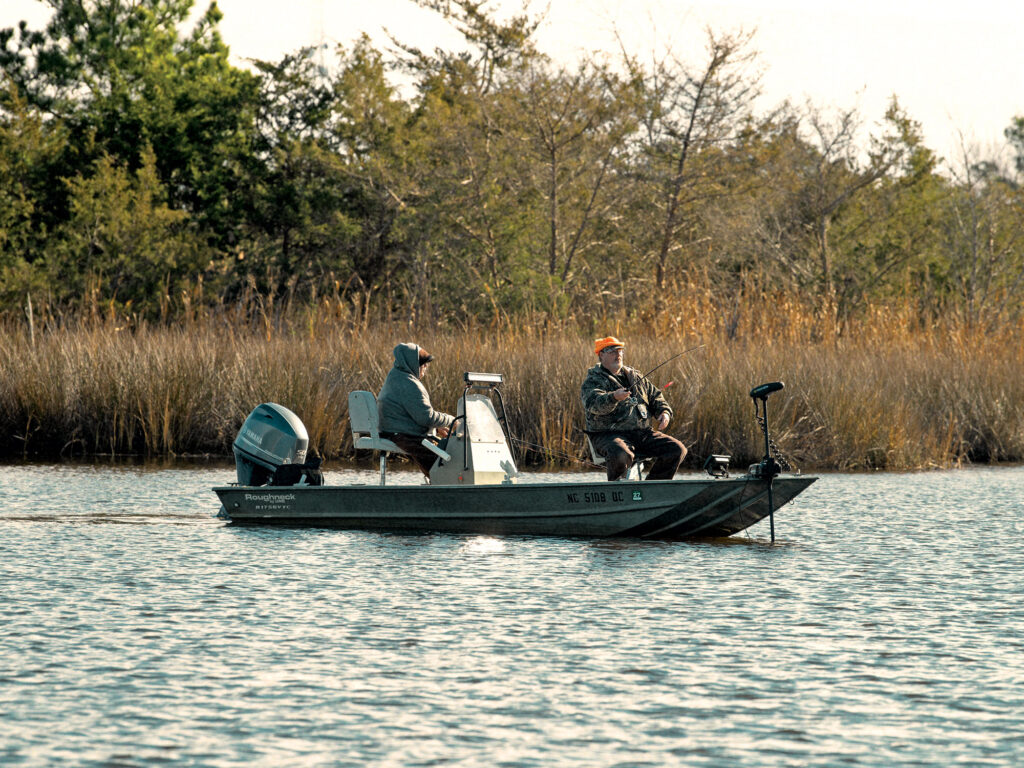
Search Mode
Lesko starts the hunt by slowly moving down the creek with his Minn Kota Terrova 112 trolling motor while searching the water with a Garmin SideVu side-scanning sonar system. When he spots a school of fish on the display, he puts the trolling motor in anchor lock and drops the Garmin Live Scope forward-facing live-sonar transducer.
The transducer is attached to a pole mounted to the side of the boat. Lesko turns the pole to direct the sonar signal. On the fish-finder screen, I can see trout swimming through the transducer beam in real time. Direse makes a cast and I watch his lure move through the fish. One of the marks breaks free of the group and swipes at the lure. Direse’s rod bends. I’m watching the action unfold on the screen like a live video feed.
Lesko says he uses the transducer in forward mode in water deeper than 10 feet and switches to landscape mode in shallower water.
Learning to decipher fish and bait from structure and bottom requires careful study of the fish-finder screen. With practice, using forward-facing live sonar is like removing the water to expose the fish.
Read Next: Top 10 Speckled Trout Lures
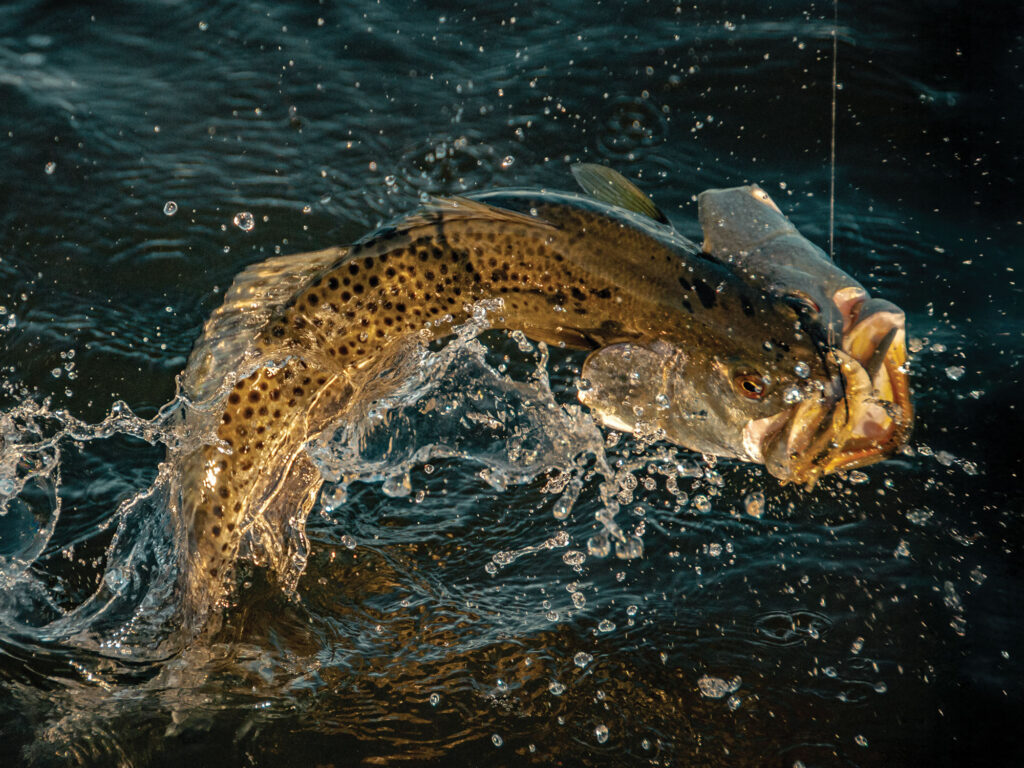
Twitchy Trout
In the cold, clear water, speckled trout are super finicky. To finesse the fish into biting, Lesko relies on small soft plastics and a variety of hard baits, all slathered with a coat of fish-attractant jelly.
When the fish are in shallow water, Lesko responds with twitch baits or large glide baits. He starts with a 7-foot, 3-inch medium-fast Daiwa Tatula spinning rod and a 2500 Shimano Vanford reel spooled with 10-pound-test braided line and an 18-inch length of 20-pound-test fluorocarbon leader. A stiffer rod tip gives the twitch bait a crisper action.
His first choice is a soft-body twitch bait. These plug-shaped soft-plastic lures from makers like Paul Brown and Steve’s Lures have gained a cult-like following among trophy trout hunters. “These lures work in 3 to 6 feet of water,” he says. The key to drawing strikes with a twitch bait is the slow, steady action. A twitch bait requires twitching the rod tip and then pausing while the lure hovers in the water. “I get almost all my bites on the pause,” Lesko says. As the water temperature drops, the pause should get longer. “Hold the lure still as long as possible,” he says. I tried to follow his instructions, but the freezing cold temperatures had me shaking like a Chihuahua.
In deeper water, Lesko uses a 7-foot, medium-light rod and a 2500-size spin reel to fish a 3- to 5-inch soft plastic on a 1/8- to 1/4-ounce swim jig head. He likes A.M. Fishing’s Midnight Mullet as well as the classic Zoom Super Fluke. “I cast up-current and let the lure sink slowly while jerking the rod tip,” he says. The subtle action encourages trout to strike.
Just when I thought I would freeze to death, the sun rises and we switch to topwater lures. In low-light conditions, Lesko uses large walk-the-dog surface lures like a Heddon Zara Spook to draw strikes. We work the lures over flats and oyster beds. I hold my rod tip low and work the tip with a slow, methodical, back-and-forth swing to make the lure zig-zag across the surface.
Once the sun is above the trees, the air warms and I strip away my jacket and bibs. We move to the main river and search the ledges along the banks and flats. Lesko works the fish finder and trolling motor, searching for fish then locking the boat in position. Cast after cast produces a quality catch, but I’m unable to break the 24-inch trophy threshold.
Lesko says the trout fishing is improving, and each year the trophy class grows larger. “The challenge is catching a fish over 30 inches and 10 pounds,” he says. To pull it off, Lesko sacrifices sleep and comfort. “It’s a grind,” he adds, “but I love it.”

